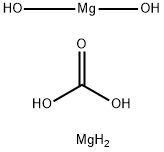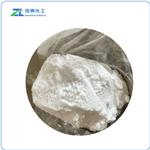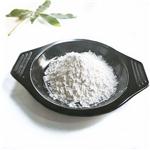Description
Magnesium carbonate is a basic hydrated magnesium carbonate
or a normal hydrated magnesium carbonate. It occurs as light,
white, friable masses, or as a bulky, white powder. It is odorless,
and is stable in air. It is practically insoluble in water, to which,
however, it imparts a slightly alkaline reaction. It is insoluble in
alcohol, but is dissolved by dilute acids with effervescence.
Magnesium carbonate is a GRAS substance under the provisions
of the Code of Federal Regulations as miscellaneous and/or gen eral purpose food additives. Magnesium carbonate is listed as GRAS substances migrating to food from paper and paperboard
products used in food packaging.
As a general purpose food additive, magnesium carbonate is used
as alkali in adjusting the acidity of foods. In addition to the fore going, magnesium carbonate, the most widely used magnesium
salt, serves as a drying agent, bleach ingredient, anticaking agent
and carrier for other additives. Other uses of magnesium salts
include firming agents, lubricants, flavor enhancers, and process ing aids. Pharmaceutically, carbonate is used as antacids.
Magnesium is an essential nutrient for plants and animals and is
a natural constituent of fruits, vegetables, grain, meats and sea foods. It is the fourth most abundant cation in the human body
and the second most plentiful intracellularly. The average 60-kg
human adult body contains about 24 g magnesium of which about
one-half resides in bone. Although plasma levels vary between 1.7
and 3 .0 mg per dl, very little is contained in extracellular fluid.
Magnesium is essential for the production and transfer of energy,
for protein, fat, and nucleic acid synthesis, for contractility in
muscle and excitability in nerve, and for the activity of numerous
enzyme systems.
Uses
Magnesium carbonate basic may be employed for the isolation of carotenoids from grapes during the quantification of carotenoids in grapes by reversed-phase C
30 (RP-30) HPLC-DAD-MS (ESI
+) (High-performance liquid chromatography-diode array detection-mass spectrometry with electrospray ionization) analysis.
Preparation
Various procedures have been documented for the synthetic preparation of Magnesium carbonate hydroxide. Prakash and Gupta (1987) formed magnesium carbonate trihydrate by the carbonation of Mg(OH)2 slurries and then, by boiling the pulp, formed the magnesium hydroxy carbonate. While studying the separation of magnesium/calcium carbonates from dolomite, Cáceres and Attiogbe (1997) recovered pure hydromagnesite from the aqueous residue. Morie et al. (1986) manufactured Magnesium carbonate hydroxide by mixing a basic magnesium carbonate suspension and a magnesium oxide suspension while bubbling with gaseous CO2[1].
Definition
The Magnesium carbonate hydroxides are hydrated basic magnesium carbonates containing the equivalent of 40–45% of MgO. Two forms are essentially used—light and heavy—the difference being the number of water molecules included in the compound. Light magnesium carbonate has the empirical formula (MgCO3)4·Mg(OH)2·4H2O and heavy magnesium carbonate (MgCO3)4·Mg(OH)2·5H2O. It can be used in pharmaceuticals as an inert vehicle and an adsorbent. Due to its fine texture and high absorbency, it is used in cosmetic manufacturing as a carrier and retainer of perfumes. It is also used in the rubber industry as a reinforcing agent, as an extender for titanium dioxide in paint and lithographing inks, and as a precursor for other magnesium-based chemicals. Magnesium carbonate hydroxide decomposes during an endothermic reaction and produces decomposition products, H2O and CO2, that are non-toxic. These are just a few of the favourable characteristics which have resulted in the use of magnesium hydroxide and aluminium hydroxide as flame retardants[1].




